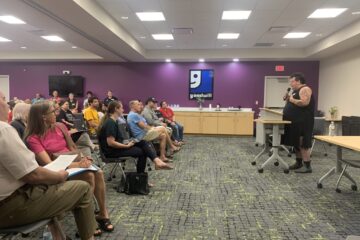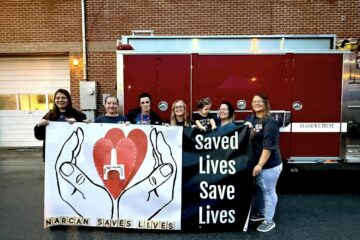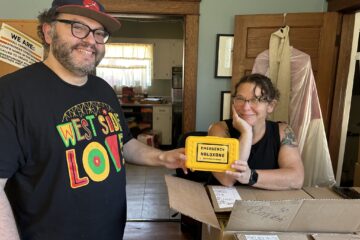by Sierra Marling with the Charleston Gazette-Mail
On Charleston’s West Side last week, three local drug prevention organizers sat on the porch of a house, bathed in warm late-summer sunlight. Behind them, two rooms were filled with boxes of stickers, naloxone and other materials for Save a Life Day. They were some of the 463 kits to be distributed Thursday at 16 sites in Kanawha County.
All 55 counties in West Virginia are preparing for the country’s largest annual free naloxone distribution event, Save a Life Day East, a movement involving 30 states and more than 300 events across the Eastern United States.
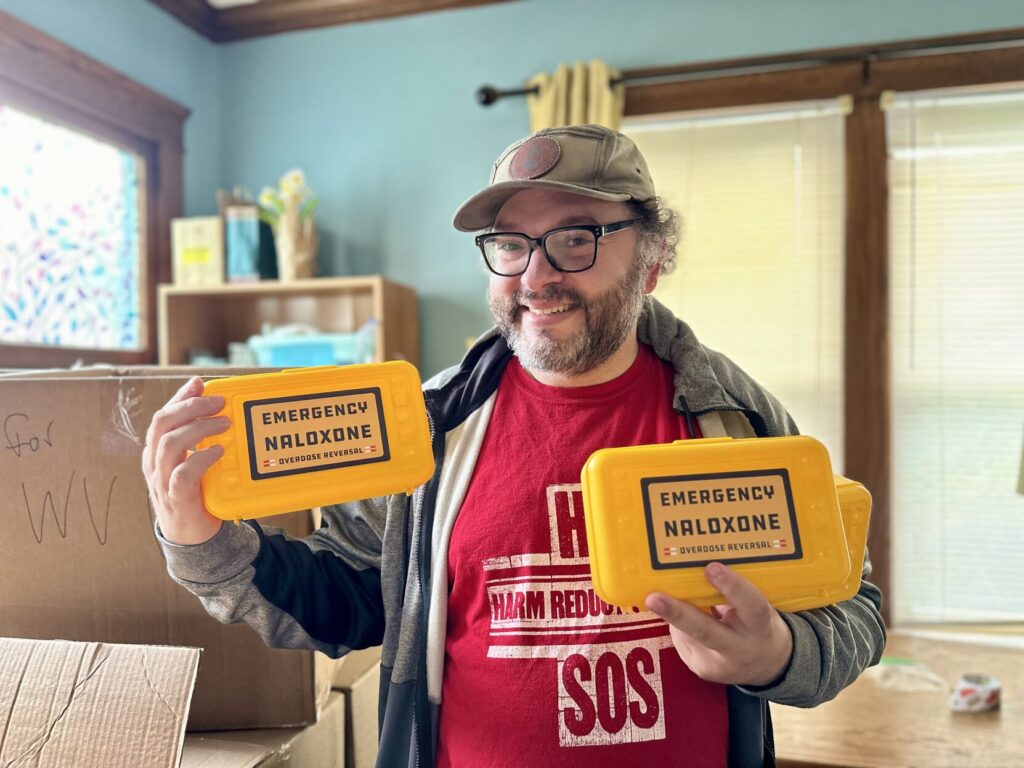
This one-day initiative on Thursday seeks to make naloxone — an opioid reversal drug — more widely available. Narcan is a brand name for naloxone.
Back on the porch of that West Side house, Sarah Stone, co-director of SOAR WV — a community organization that supports those impacted by drug use — scrolls through her phone, her face somber. She stops and shows a list of names. It’s a long one, requiring a few taps to scroll through.
It’s a list of people she’s known who have overdosed and died.
“This is why I do this,” Stone said. “The first person I knew to die from an overdose was in 2007. Then, in 2017, my friend passed, and it literally changed everything for me. This list is full of people I’ve shared meals with, people I’d recognize on the street — and now, they’re gone.”
Stone’s story is far from unique. SOAR WV member Paul Dalzell remembers seeing three potential overdose cases on his way to work one morning. Since then, he’s carried naloxone with him “just in case.”
Fortunately, he hasn’t needed to use it yet.
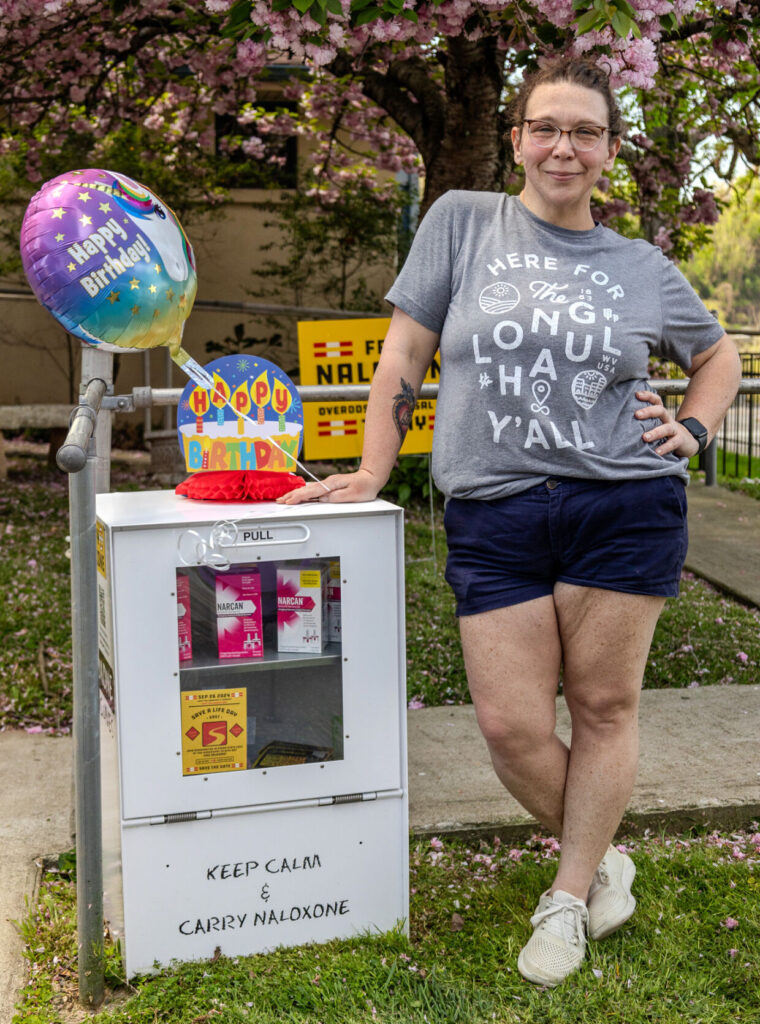
Joe Solomon, Charleston city councilman-at-large and SOAR WV co-director, underscored the importance of the event.
“This work saves lives,” he said. “Everybody deserves to live.”
While Save a Life Day is a national initiative, the impact is also felt locally.
In 2021, Dr. Matthew Christiansen, director of the state’s Office of Drug Control Policy, testified to the West Virginia House of Delegates that nearly 67,000 naloxone kits were distributed that year — four times the amount in 2020. Of those, 5,000 kits were distributed on Save a Life Day alone, and data showed that overdose deaths in Kanawha County had stabilized, even slightly decreasing after the event.
Save a Life Day coordinator Caroline Wilson highlighted another important goal of the initaitive: breaking the stigma around naloxone.
“Our goal is to promote positive messaging around naloxone that lasts all year,” Wilson explained. “Overdose is a tragic topic, but there are solutions. We want people to see saving a life as a no-brainer. ‘Normalized,’ if you will.”
Naloxone pick-up sites are strategically located in familiar community spaces — churches, clinics, libraries, recovery homes, gas stations, fire departments and even local dollar stores.
According to Solomon, “The idea isn’t to get people to come to you but to meet people where they are. It’s inspiring to see how creative folks get, setting up pop-up booths, driving around with four-wheelers, even organizing parades.”
Helping versus enabling
There’s ongoing debate about whether distributing naloxone helps or enables those struggling with addiction.
Bart Hodel is pastor of Southeast Nazarene Church, at 5102 MacCorkle Ave. SE, in Kanawha City, which is one of the naloxone distribution sites for Save a Life Day.
“It can be hard to tell when you’re helping versus when you’re enabling,” he said.
However, medical professionals support the distribution of naloxone.
Dr. James Berry, a psychiatrist specializing in addiction treatment at West Virginia University, debunked the misconception that naloxone enables addiction.
He likened the argument to someone claiming seat belts would cause people to drive faster and more recklessly.
“That just doesn’t happen,” he said.
In fact, he reasoned that there is decades of “robust” evidence to the contrary, including in his own experience.
According to Berry, substance use disorder is a real disease, with treatment rates on par with other chronic diseases, like diabetes.
There are a number of factors that go into someone’s struggles with drug addiction; however, the ongoing drug use and economic depression within the state also makes it more likely that children will grow up to use drugs as they face adverse childhood experiences, like abuse and trauma.
“I’d say most of our patients have had at least one overdose. The vast majority of our patients have been revived with Narcan at some point; almost 100% of them have given Narcan to someone else if they haven’t [dosed] themselves,” he said. “Too many people have died unnecessarily from overdoses.”
He also stressed that addiction is treatable.
“People do get better, and they get better all the time. I’ve been doing this for 20 years, and I’ve seen so many lives turn around.”
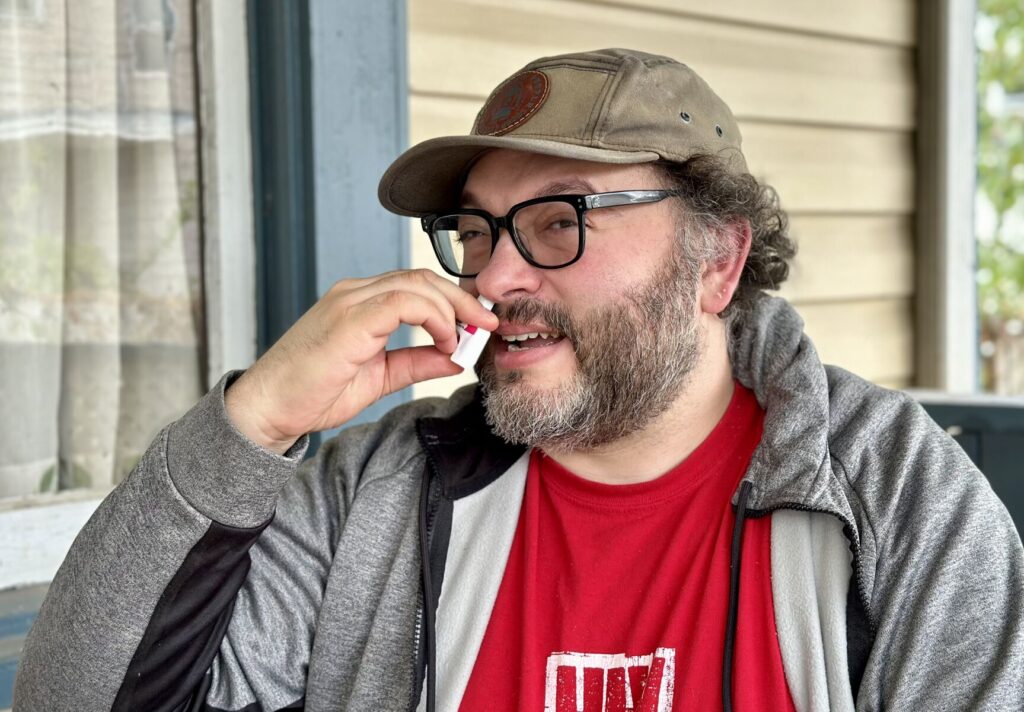
Naloxone: How it works
Berry said naloxone works by binding to opioid receptors in the brain, displacing the opioids and quickly reversing their effects. Often, naloxone acts so quickly it can be jarring for the recipient as well, causing them to suddenly resume breathing and awaken.
“It can be very powerful. It is almost like bringing somebody back from the dead because they could almost be dead,” he said. “If you give them Narcan, they immediately feel the effects of it.”
When they awaken, they will likely be very sick, uncomfortable and in pain, Berry advised. It may be wise to step back and allow the person to process any large emotions or confusion they may have.
In cases of stronger opioids like fentanyl, a single dose may not be enough. Berry advised giving multiple doses if necessary, noting, “Don’t assume it didn’t work if one dose isn’t enough.”
Naloxone’s safety is also well-documented. If someone isn’t actually overdosing, administering naloxone won’t harm them.
“When in doubt, give Narcan,” Berry said. “It may save their life.”
Sierra Marling covers health education for the Charleston Gazette-Mail. Contact her at 502-783-6738 or [email protected].
